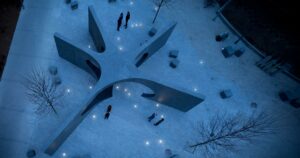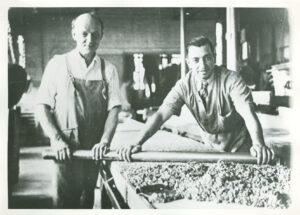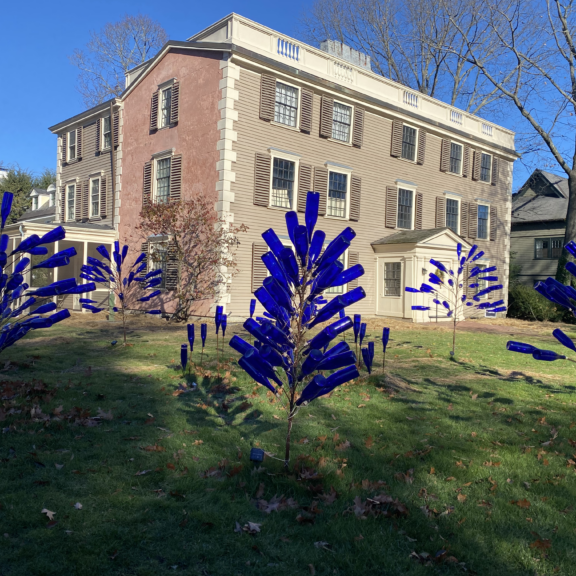
History Cambridge looks back at 2022
By Beth Folsom, 2022
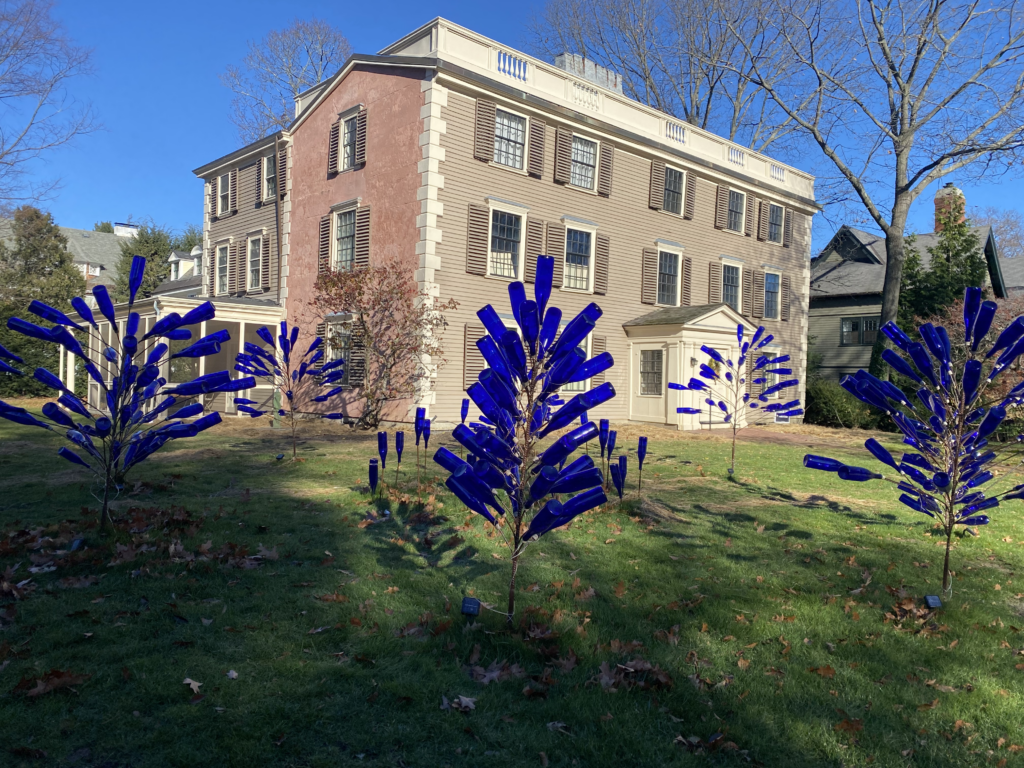
As 2022 comes to a close, History Cambridge is looking back on a year filled with events and collaborations that have helped us to live into our mission to collect and share the stories of all Cantabrigians. Our theme for 2022 was “Who Are Cambridge Workers?” Many of our programs focused on the history of labor in the city, but we also held events and created partnerships in other areas of Cambridge history, including our temporary art installation honoring the lives of the enslaved people who lived and worked on Brattle Street. Through our events, tours, articles, and collaborations, we explored the rich history of the city and its residents, and added to the mosaic of stories that make Cambridge such a vibrant place to call home.
Our Opening Conversation, held in February, focused on the so-called “gig economy” and its impact on those living and working in the city. We discussed the changing nature of labor and employment, both in Cambridge and in the wider world, exploring both the benefits and challenges of a shift away from hourly or salaried jobs to an independent-contractor model of employment. In addition to the general challenges faced by all gig workers, we also explored the unique risks faced by Black gig laborers, including the lack of protections against and channels for reporting racial bias at work.
In our quest to do “history without borders,” we spoke in February with Dr. Barbara Brown of Hidden Brookline, an organization dedicated to bringing to light the history of slavery and freedom in Brookline. This collaboration provided an opportunity to ask how we can bring the stories of both enslaved and free Black residents to the forefront of local history, and what one city’s experiences can teach Cantabrigians about uncovering these stories within our own community.
The first of our History Cafe programs, The Work of Revolution, was held in June and explored the definition of labor in Revolutionary-Era Cambridge. Although much is known about George Washington’s residency in Cambridge in the early days of the Revolution, the reality is that it was the labor of women and people of color that enabled the Continental Army to function, as well as feeding, housing, and serving both the American and British troops present in the city. By centering the work experiences of women and BIPOC during this period, we were able to expand the scope of the Revolutionary narrative and bring to light stories that have not often been shared with a wider audience.
This summer, we were fortunate to get a grant from Cambridge Arts and the Mass Cultural Council to create a temporary public art installation on the front lawn of our headquarters at 159 Brattle St., West Cambridge. Designed by the artists of Black Coral, “Forgotten Souls of Tory Row: Remembering the Enslaved People of Brattle Street” honors the enslaved adults and children who lived and worked on this land as well as those whose labor on Caribbean plantations helped finance the grand homes of white Tory Row elites.
The installation is a collection of bottle trees; originating in the Congo in West Africa and dating back to at least the ninth century, the bottle tree tradition was brought to the United States by enslaved people, most notably those who lived in Georgia and South Carolina. This tradition was passed down through generations of enslaved and, later, free Black communities, marking the survival of a cultural practice despite the bonds of slavery. The distinctive blue bottles were placed on tree limbs to capture the energy, spirit and memories of ancestors. Although we do not know all of the names or life experiences of the enslaved people the installation commemorates, we aim to honor their humanity through this installation and restore their physical presence to the land where they once lived and worked.
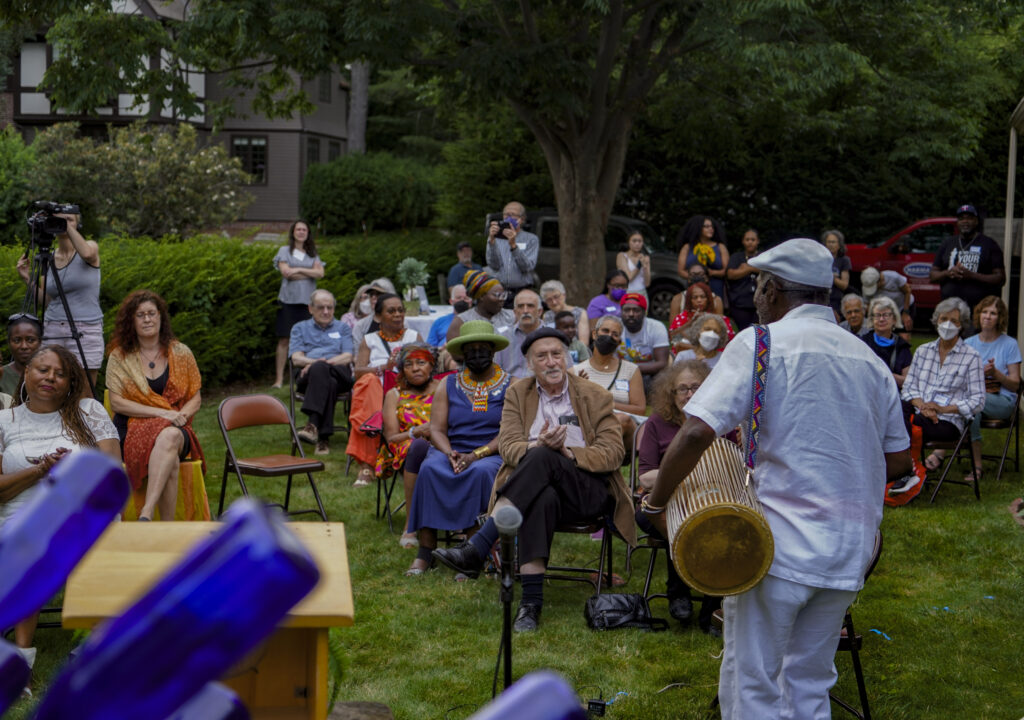
In July, we gathered with Black Coral and members of the community on the front lawn of the Hooper-Lee-Nichols House to celebrate the art installation. Included in the celebration were a libation ceremony, readings by L’Merchie Frazier and a drum invocation by Cornell Coley. We also hosted a conversation with the artists of Black Coral in which they discussed their vision and the ways in which public art can function as a means of filling gaps in the historical record and creating a more complete history that includes people and groups who have previously been excluded.
This summer we also introduced our Indigenous People’s History Hub with resources for learning about Indigenous experiences in and around the city, as well as connecting with other local organizations doing this important work. In 2018, History Cambridge created a land acknowledgment in commitment to doing good history and telling the whole story of Cambridge. Though acknowledging our occupation of Indigenous land is an important step in recognizing the presence of Indigenous life, we must also make a continued effort to learn from and engage with the past and present histories of Native life and culture in the spaces we occupy. The creation of this hub is only the beginning of these efforts. Over time we hope to expand the hub to fill the gaps in recorded history and uplift the stories and voices of Indigenous peoples past and present.
Our second History Cafe Changing Tides in Cambridge Industry was held in July, focused on the role of workers in Cambridge factories and large-scale industry. We explored what the industrial landscape of the city looked like in the 19th and 20th centuries, comparing it to that of present-day Cambridge. We discussed how waves of migration—both domestic and international—shaped the demographic makeup of Cambridge’s industrial labor force, as well as the struggles workers have faced in the city’s largest industries and the ways in which they have organized and advocated for themselves.
In September, authors Karen Weintraub and Michael Kuchta led a tour of sites featured in their book, Born in Cambridge: 400 Years of Ideas and Innovators. Cambridge is full of historical innovations, but we chose to focus the tour on the area in and around Cambridgeport, as we will be focusing on this neighborhood during our 2023 program year. Throughout the tour, our guides expounded on Cambridge’s “secret sauce”—that special combination of factors that has allowed a relatively small city to play such a prominent role in the development of new ideas. Weintraub and Kuchta cited Cambridge’s rich history as a center of higher learning, the density and diversity of its population, a commitment to the common good, a diversified economic base, and visionary leadership, as some of the key factors that have allowed Cambridge to continually reinvent itself, successfully adapt to change, and create contributions that have enriched the wider world.
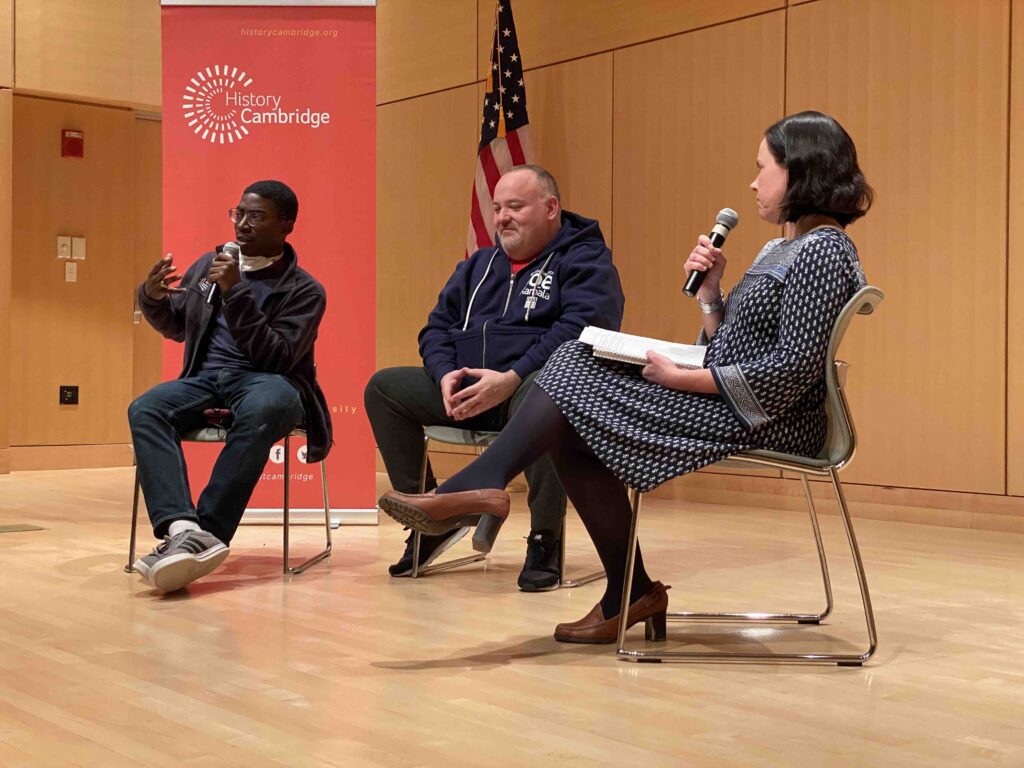
The final program in our series, our Fall Conversation: “How Does Cambridge Unionize?” explored the history of labor organization in the city and the current state of unions in the wake of the recent dual pandemics of COVID-19 and systemic racism. Our guest speakers discussed the changes they are witnessing in attitudes toward labor unions, both by workers themselves and by the general public, and detailed the ways in which the events of the past several years have created a new awareness of the role of labor organizations on both the local and national levels.
In addition to our programs, we engaged with the Cambridge community this year through our weekly “Did You Know?” column in Cambridge Day, tours and visits by school groups, interactive exhibits at community events, and partnerships with organizations throughout the city, including the Slave Legacy History Coalition. We are grateful to all of you who “did history” with us in 2022, and we look forward to continuing to learn alongside you in 2023!
This article was originally published in our “Did You Know?” column in Cambridge Day.




